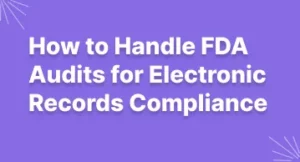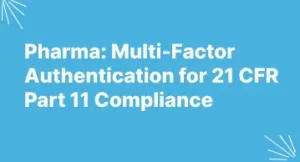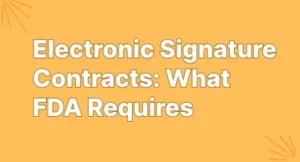Equip Your Drug Launch with Nitrosamine Regulations: Essential Guide
Introduction
This guide is designed to help organizations understand and comply with the nitrosamine regulations related to marketing applications for new drug products. Nitrosamine regulations are put in place to protect public health and ensure that new drug products are safe for consumer use. By understanding and adhering to these regulations, organizations can avoid potential fines and penalties associated with non-compliance.
Introducing Nitrosamine Regulations
Nitrosamine regulations are a set of standards that organizations must meet when it comes to developing and marketing new drug products. These regulations exist to ensure the safety of the public and the environment by limiting the amount of nitrosamine compounds that may be released into the environment as a result of the production and use of these drugs.
This guide will cover the steps that organizations need to take in order to comply with the nitrosamine regulations, as well as key considerations and potential pitfalls to avoid. We’ll also discuss how organizations have successfully complied with these regulations, and provide resources for additional information.
Steps to Comply With Nitrosamine Regulations
Understanding and complying with nitrosamine regulations is essential for organizations conducting new drug product marketing applications. To do this properly, there are five key steps that organizations must take:
- Formulate the new drug product: Organizations must ensure that the formulation of the new drug product meets all applicable regulations. Establishing proper protocols for testing, validation, and control should be part of this process.
- Identify potential sources of nitrosamines: Organizations must identify all potential sources of nitrosamines that could be present in the new drug product. This includes any raw materials used in the product, manufacturing process, and packaging.
- Develop a risk assessment plan: Organizations should develop a risk assessment plan to identify, analyze, and address any nitrosamine-related risks associated with the new drug product.
- Implement mitigation strategies: Effective mitigation strategies should be developed and implemented to eliminate or reduce nitrosamine levels as much as possible.
- Develop a regulatory compliance plan: Organizations should create and maintain a regulatory compliance plan to ensure that all applicable nitrosamine regulations are adhered to. This includes ensuring that the new drug product meets any set limits for nitrosamine levels.
It is important to remember that these steps need to be taken in order to properly comply with nitrosamine regulations.
Key Considerations
When it comes to understanding and complying with nitrosamine regulations, there are a few key considerations that organizations must be aware of. These include:
- The Type of Product: Organizations must consider the type of product being marketed in order to ensure compliance with nitrosamine regulations.
- Source of Contamination: Companies should determine the source of nitrosamine contamination in their product, as well as potential levels of contamination.
- Potential Risk: Organizations should assess the potential risk associated with nitrosamine contamination, including any associated health risks.
- Compliance Measures: Companies should create a plan for complying with nitrosamine regulations, including steps for testing and monitoring.
It is essential for organizations to be familiar with these factors when it comes to ensuring compliance with nitrosamine regulations.
Examples
When it comes to understanding and complying with nitrosamine regulations, it can be helpful to look to the example of organizations who have successfully done so. By examining their tactics, you can gain insight into strategies that may work for your organization when facing nitrosamine requirements.
For instance, Johnson & Johnson recently completed a thorough evaluation of all its products and ingredients to ensure compliance with nitrosamine regulations. Through this process, it identified and eliminated sources of nitrosamines from its drugs and drug products. In addition, it also developed an enhanced testing program for existing and newly manufactured products to guarantee that its products are nitrosamine-free.
Another organization, Pfizer, has implemented improved laboratory testing processes designed to detect nitrosamines that could be present in its drug product ingredients. Additionally, Pfizer created a comprehensive tracking system for all of its suppliers and contracted manufacturers, so that it can monitor the nitrosamine levels of the materials it uses in its manufacturing processes.
These are just a few examples of the kind of proactive approaches organizations have taken to meet nitrosamine regulations. By looking to the examples of organizations such as Johnson & Johnson and Pfizer, you can gain valuable insights into ways to approach and comply with applicable nitrosamine regulations for your own new drug product marketing applications.
Pitfalls to Avoid
When creating new drug products there are numerous regulations and safety considerations that your organization must abide by in order for your product to be approved by the FDA. One of these important regulations pertains to nitrosamine contamination. Not complying with nitrosamine regulations can result in significant fines or even criminal penalties.
It is essential that organizations ensure they have a solid understanding of all applicable nitrosamine regulations and take steps to comply. Failing to do so can have serious consequences, including:
- Enforcement action from the FDA or other regulatory body.
- Financial penalties, including fines, reimbursements, and lost revenues.
- Reputational damage.
- Criminal penalties for negligent or intentional acts.
Your organization can minimize its risks by staying up-to-date on the latest nitrosamine regulations and taking the appropriate steps to ensure compliance.
Relevant Resources
Understanding nitrosamine regulations is an important part of achieving compliance with the marketing applications for new drug products. There are several resources available to help organizations understand and comply with these regulations.
Here are 3-4 resources that can be used to further your understanding of nitrosamine regulations:
- The FDA’s website on Nitrosamine Impurities in Drug Products – a comprehensive source of information about the various nitrosamine regulations and how they apply to new drug product marketing applications.
- The European Medicines Agency’s Guidance on Nitrosamine Impurities – a detailed document explaining the regulatory context of nitrosamine impurities, as well as advice on risk assessment and control of nitrosamine impurities.
- The International Council for Harmonization’s Guideline on Nitrosamines – a set of guidelines to help companies comply with nitrosamine regulations, including guidance on testing and control strategies.
- Industry Associations – joining relevant industry associations can provide organizations with access to expert advice on nitrosamine regulations and best practices for compliance.
These resources can help organizations stay up to date with the latest advancements in nitrosamine regulation and develop effective strategies for compliance.
Summary
Understanding and complying with nitrosamine regulations for new drug product marketing applications is essential in order to ensure that products are safe and of high quality. This guide provides a comprehensive overview of nitrosamine regulations, including a discussion of the steps necessary to achieve compliance, key considerations to keep in mind, potential pitfalls to avoid, and resources for further information. Organizations should follow each step outlined in the guide to ensure that they are in full compliance with all applicable nitrosamine regulations.
The first step in complying with nitrosamine regulations is to familiarize yourself with the regulations. Next, organizations should assess the risk of nitrosamines in their product as well as identify any potential sources of exposure. Third, organizations should develop an effective plan for mitigating nitrosamine risk. Finally, organizations should establish a testing program and regularly monitor and verify their compliance with all nitrosamine regulations.
Key considerations organizations need to keep in mind when attempting to comply with nitrosamine regulations include regularly reviewing their processes to ensure that all relevant regulations are being met, developing safe handling and storage protocols, and providing employees with further training on nitrosamine regulations. Additionally, organizations should be mindful of the potential financial implications of not complying with nitrosamine regulations, as violators may be subject to fines and penalties.
Overall, it is important for organizations to understand and comply with applicable nitrosamine regulations in order to protect consumers and maintain a high degree of quality control over their products. This guide provides a comprehensive overview of the steps necessary for successful compliance as well as resources for further information.
Q&A Session
When it comes to understanding and complying with nitrosamine regulations, questions are inevitable. Here we answer a few of the most common ones:
- What is nitrosamine? Nitrosamine is a type of organic compound that is formed from the reaction of nitrogen-containing compounds with secondary amines. In drug products, nitrosamines can form from nitrites and certain amines and lead to a potential risk of cancer.
- What is the purpose of nitrosamine regulations? The purpose of nitrosamine regulations is to ensure that drug products are safe for human use and consumption. By setting limits on the amount of nitrosamine present in drugs, regulators can help reduce the risk of these compounds causing any health issues.
- Are there any penalties for not complying with nitrosamine regulations? Yes. If companies do not comply with applicable nitrosamine regulations, they can be subject to fines and other penalties. In addition, any marketing applications for new drug products may be rejected or delayed if the product does not comply with nitrosamine regulations.
Conclusion
Complying with nitrosamine regulations for new drug product marketing applications is essential in order to market medicines safely and responsibly. It is important to make sure that manufacturers, marketers, and distributors of drug products understand the applicable regulations and keep up with all changes or additions. Organizations must take necessary steps to ensure compliance with nitrosamine regulations in order to avoid costly fines or other penalties. Understanding these regulations and taking the proper steps to comply with them is essential to maintaining a successful business in the world of drug product marketing.
Creating an Action Plan for Nitrosamine Regulations Compliance
In order to ensure successful compliance with nitrosamine regulations, organizations must create an action plan. This will help to ensure that all necessary steps are taken in order to meet the requirements of these regulations.
Below are some steps for creating an effective action plan:
- First, identify any areas where the organization is currently not in compliance and develop a plan to address these issues.
- Second, find resources that can provide further guidance on compliance with nitrosamine regulations.
- Third, consult with other organizations that have successfully complied with these regulations.
- Fourth, create a timeline of when certain milestones need to be achieved in order to comply with the regulations.
- Fifth, assign specific tasks to team members or external consultants as needed.
- Sixth, look for potential areas of improvement as the action plan is implemented.
An action plan is an essential part of compliance with nitrosamine regulations. As the action plan is developed, organizations should ensure that all necessary steps are taken and that relevant resources are consulted in order to achieve compliance.
Resources to Further Your Understanding of Nitrosamine Regulations
It is important to have a comprehensive list of resources to refer to when it comes to understanding and complying with nitrosamine regulations. Here are some key resources that can help organizations better understand these regulations and how they apply to new drug product marketing applications:
- US Food and Drug Administration (FDA) website – This is the official website for the US FDA, providing extensive information on nitrosamine regulations as well as other relevant regulations.
- ClinicalTrials.gov – ClinicalTrials.gov is a government-funded website listing information about clinical studies related to nitrosamine regulations, providing valuable insights about how new drugs are tested for compliance.
- Industry-specific websites – Pharmaceutical companies often maintain websites that provide detail about their specific products and how they comply with nitrosamine regulations.
- When available, review documents – When new drug products are submitted for approval, review documents are often published online that provide insight into a company’s approach to nitrosamine regulation compliance.
These resources should be reviewed regularly to ensure that organizations remain compliant with applicable nitrosamine regulations.
FAQs About Complying with the Nitrosamine Regulations for Your New Drug Product Marketing Applications
1. What are nitrosamine regulations?
Nitrosamine regulations refer to regulatory measures that organizations must adhere to when it comes to marketing and selling new drug products. These regulations are intended to ensure that drug products meet safety standards and ensure patient safety.
2. What steps should organizations take to comply with nitrosamine regulations?
Organizations should first understand the requirements for compliance and then ensure that their processes and systems are up-to-date and in compliance. Specific steps should include: 1)Reviewing the relevant documents and conducting a gap analysis; 2)Updating existing processes and/or designing new processes to comply with the regulations; 3)Testing and validating software systems; 4)Developing and executing a training program for all relevant personnel; 5)Performing annual audits; and 6)Monitoring and reviewing all documents to ensure continued compliance.
3. What are the key considerations when complying with nitrosamine regulations?
It is important to consider the potential cost of non-compliance, as fines and penalties can add up quickly. Additionally, businesses should prioritize product safety and patient safety when considering any changes or modifications to their processes and systems. Finally, organizations should evaluate any third-party suppliers or contractors to help identify areas of vulnerabilities that may not be readily apparent.
4. Are there any examples of organizations that have successfully complied with These regulations?
Yes, there are numerous examples of organizations that have successfully complied with nitrosamine regulations. For instance, AstraZeneca conducted an extensive review of existing processes and developed a comprehensive training program for employees, while Boehringer Ingelheim established a robust monitoring process and set up independent testing for all components of new drug products.
5. What are the potential pitfalls of not complying with nitrosamine regulations?
The biggest potential pitfall of not complying with nitrosamine regulations is financial. Fines imposed by regulatory bodies can lead to significant financial losses. Additionally, failure to comply with nitrosamine regulations can also result in product recalls, decreased profitability, and reputational damage
6. Where can I find more information about nitrosamine regulations?
There are numerous resources available to help organizations understand nitrosamine regulations. Relevant information is available on government websites such as FDA.gov, the European Medicines Agency’s website, and various other websites. Additionally, professional associations and organizations that provide guidance on relevant topics may be consulted as well.
7. What are some next steps organizations can take to achieve compliance with nitrosamine regulations?
Next steps organizations can take to achieve compliance with nitrosamine regulations include: 1) Establishing and maintaining open lines of communication with regulatory bodies; 2) Conducting regular assessments and audits to ensure adherence to the regulations; 3) Updating software systems and incorporating new technologies and innovative solutions; and 4) Evaluating any potential risks and creating a mitigating action plan.







